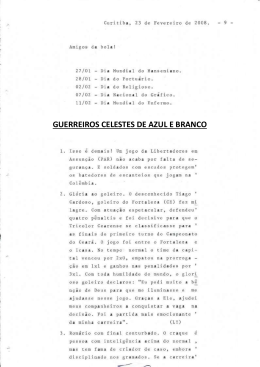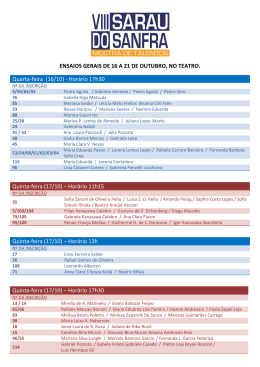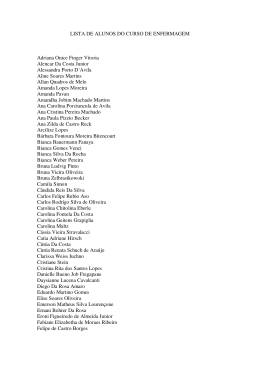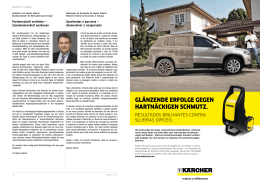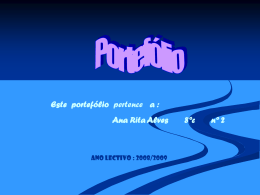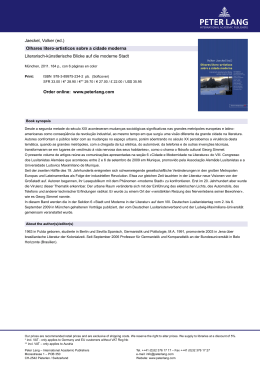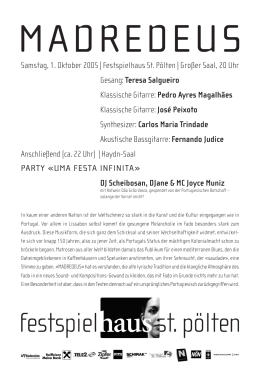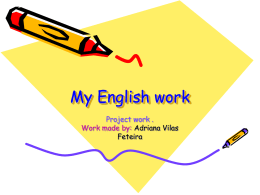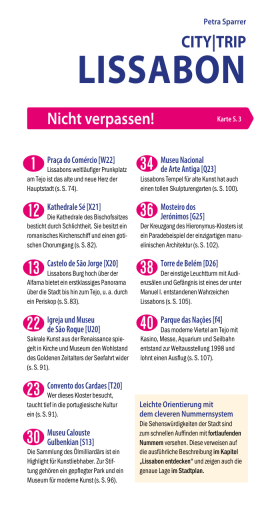Gabriela Albergaria Portfolio 2003 - 2011 Gabriela Albergaria Térmico Solo exhibition Pavilhão Branco. Museu da Cidade Lisboa, 2010 ( 1/26 ) Gabriela Albergaria Térmico Solo exhibition Pavilhão Branco. Museu da Cidade Lisboa, 2010 ( 2/26 ) Gabriela Albergaria Térmico Solo exhibition Pavilhão Branco. Museu da Cidade Lisboa, 2010 Árvore com parafuso, 2010 Acácia, peça de ferro torneado em forma de parafuso e galvanizado, cabos de aço, parafusos. ( 3/26 ) Gabriela Albergaria Térmico Solo exhibition Pavilhão Branco. Museu da Cidade Lisboa, 2010 Árvore com parafuso, 2010 ( 4/26 ) Gabriela Albergaria Térmico Solo exhibition Pavilhão Branco. Museu da Cidade Lisboa, 2010 Árvore com parafuso, 2010 ( 5/26 ) Gabriela Albergaria Térmico Solo exhibition Pavilhão Branco. Museu da Cidade Lisboa, 2010 Árvore com parafuso, 2010 ( 6/26 ) Gabriela Albergaria Térmico Solo exhibition Pavilhão Branco. Museu da Cidade Lisboa, 2010 Couche sourde, 2010 Terra, ramos de árvores e folhas de árvores prensados ( 7/26 ) Gabriela Albergaria Térmico Solo exhibition Pavilhão Branco. Museu da Cidade Lisboa, 2010 Couche sourde, 2010 ( 8/27 ) Gabriela Albergaria Térmico Solo exhibition Pavilhão Branco. Museu da Cidade Lisboa, 2010 Couche sourde, 2010 ( 9/26 ) Gabriela Albergaria Térmico Solo exhibition Pavilhão Branco. Museu da Cidade Lisboa, 2010 Couche sourde, 2010 ( 10/26 ) Gabriela Albergaria Térmico Solo exhibition Pavilhão Branco. Museu da Cidade Lisboa, 2010 Couche sourde, 2010 ( 11/26 ) Gabriela Albergaria Térmico Solo exhibition Pavilhão Branco. Museu da Cidade Lisboa, 2010 Under an Artificial Sky, 2006 Desenho/ficção de uma paisagem após visita à Pfaueninsel, Berlim ( 12/26 ) Gabriela Albergaria Térmico Solo exhibition Pavilhão Branco. Museu da Cidade Lisboa, 2010 “Un jardin à ma façon”, 2006 Madeira, terra de fibra de côco, ramos de árvores enxertados, desenho a lápis de cor sobre papel ( 13/26 ) Gabriela Albergaria Térmico Solo exhibition Pavilhão Branco. Museu da Cidade Lisboa, 2010 “Un jardin àma façon”, 2010 (detail) ( 14/26 ) Gabriela Albergaria Térmico Solo exhibition Pavilhão Branco. Museu da Cidade Lisboa, 2010 making of ( 15/26 ) Gabriela Albergaria Térmico Solo exhibition Pavilhão Branco. Museu da Cidade Lisboa, 2010 making of ( 16/26 ) Gabriela Albergaria Térmico Solo exhibition Pavilhão Branco. Museu da Cidade Lisboa, 2010 making of ( 17/26 ) Gabriela Albergaria Térmico Solo exhibition Pavilhão Branco. Museu da Cidade Lisboa, 2010 making of ( 18/26 ) Gabriela Albergaria Térmico Solo exhibition Pavilhão Branco. Museu da Cidade Lisboa, 2010 making of ( 19/26 ) Gabriela Albergaria Térmico Solo exhibition Pavilhão Branco. Museu da Cidade Lisboa, 2010 making of ( 20/26 ) Gabriela Albergaria Térmico Solo exhibition Pavilhão Branco. Museu da Cidade Lisboa, 2010 making of ( 21/26 ) Gabriela Albergaria Térmico Solo exhibition Pavilhão Branco. Museu da Cidade Lisboa, 2010 ( 22/26 ) Gabriela Albergaria Térmico Solo exhibition Pavilhão Branco. Museu da Cidade Lisboa, 2010 Thermic Gardens are the main material of Gabriela Albergaria’s work. She uses them as a tool that is simultaneously narrative, aesthetic, anthropological and mnemonic. In any of these terms and these functions, gardens carry out the role of a speech within her work, a speech that is declined according to the specific conditions of each project, using a journey through the issues of landscape, its importance within the context of the construction of social experiences and the memory of the colonial process in the migration of vegetable species. In the diversity of the supports she uses in her work she defines situations that call upon the spectator to the rediscovery of the place through references to the collective memories that pass through them. ( 23/26 ) Gardens are in themselves powerful metaphorical constructions, in essence alien to the romantic idea of landscape in the sense that they do not stand out as a fragment, but as an allegory of a world. It is from this configuration of the garden as a world that Gabriela Albergaria’s work arises, much more than from an idea of landscape. In other words, her projects are developed more from the idea that the place of a garden is that of a device that generates an articulation of experiences taken from a historical and social configuration and less from an aesthetic of landscape as a visual ordering of a fragment of the world. Her method is that of understanding the operational mechanics of that micro-cosmos and promoting an intervention that comments on botanical procedures that define a lexicon, a grammar from these methodologies that possess names: grafting, biocenosis, classification, cutting. The result of this spurious cloning between the universe of botany and artistic devices is always guided according to the memory of artistic genres, to the use of drawing, of sculpture – or more recent ones, like photography, installation, or performances. Thus her interventions are centred on the defining within the exhibition space of situations that feed off a world that in itself is allegorical, and which is produced from a technique and from a culture in order to define a new situation devolved to the beholder’s share (to use Ernest Gombrich’s term) and to his share – as landscape, now fragmentary and bearing a clear determining aesthetic and, one that orders the field of sight. Thermal, the exhibition that she is presenting now, is made up of two sculptures and three drawings that occupy the whole of the space of the White Pavilion. Starting from the situation of the garden of the Palácio Pimenta, Gabriela Albergaria takes the relationship with the typol- Gabriela Albergaria Térmico Solo exhibition Pavilhão Branco. Museu da Cidade Lisboa, 2010 ogy of the leisure garden, the echo of the practices of storing and development of natural species and the fictional capacity of the space of the garden as her subjects in order to produce a system of internal references and connections to the architecture of the pavilion. On the ground level a redesigned tree occupies the first room. The methodology of this sculpturising of a tree uses violent and particularly crude processes such as driving steel spikes through the trunk of the tree, the suspending of the tree on cable that lift it up from the floor, the eliminating of the foliage and the grafting of a giant galvanized steel screw which, ironically, would allow it to be mechanically replaced in the ground. There is an echo of extreme violence in the process that goes from the erasing of its botanical identity to the sacrificial system of its suspension, transforming its conversion into a sculpture into a painful and almost brutal process, reinforced by its being imposed onto the space. In the next room there is a sculpture made of soil, on an almost minimal scale of mass, which repeats the operation of conversion of a now sterilised thermic soil bed, with the upper floor working as an inverted repetition of these process through a didactics of the representation, produced through drawings of landscape and drawings that as a whole produce an explanation about the heat retention produced by soil in a greenhouse: the bigger the greenhouse the greater the heat it gives off. The exhibition (apparently) makes it explicit how the conversion of the space of the White Pavilion into an enormous hot-house takes place, with the title referring to the process of thermal preservation of fertile land – which, possessing a reference to Joseph Beuys, constructs a machine that that shifts through the metaphor of heat and fertility, now subverted through processes of sterilization and museumisation. This conversion of the Pavilion also takes place through a performance work that Gabriela Albergaria has specifically built for the inauguration of the exhibition – which can only be used on that day by the spectators – which consists of a structure that provides a specific and outside view on the exhibition room, articulating the antinomy between nature and artificiality, reality and representation, aspects which form the centre of her work. In the final analysis the process of this complex device lies in an ironic machine about the artificiality of nature, about the process of artificialisation that is inherent to garden architecture, as it is to art. Let us imagine that some garden peacock, in the baroque caricature of the excess of its feathers, might understand this conversion and, naturally and confined, let out its shrill cry. Delfim Sardo, 2010 ( 24/26 ) Gabriela Albergaria Térmico Solo exhibition Pavilhão Branco. Museu da Cidade Lisboa, 2010 ( 25/26 ) Térmico Os jardins são o material principal do trabalho de Gabriela Albergaria. Usa-os como como uma ferramenta simultaneamente narrativa, estética, antropológica e mnemónica. Em qualquer destes termos e destas funções, eles cumprem no seu trabalho o papel de uma fala que se vai declinando em função das condições específicas de cada projecto, usando para isso o desenho, a escultura, a instalação e a fotografia para desenvolver um percurso sobre as questões da paisagem, a sua importância no contexto da construção de vivências sociais e a memória do processo colonial presente na migração das espécies vegetais. O seu trabalho, na diversidade dos suportes que utiliza, define situações que convocam o espectador para a redescoberta do lugar através de referências às memorias colectivas que por eles perpassam. Os jardins são, em si mesmos, poderosas construções metafóricas, na sua génese alheios à ideia romântica de paisagem, na medida em que não se destacam como fragmento, mas como alegoria de um mundo. É dessa configuração do jardim como mundo que nasce o trabalho de Gabriela Albergaria, muito mais do que de uma ideia de paisagem. Por outras palavras, é mais da ideia de que o lugar do jardim é o de um dispositivo que gera uma articulação de vivências a partir de uma configuração histórica e social e menos a partir de uma estética da paisagem enquanto ordenação visual de um fragmento do mundo que os seus projectos se desenvolvem. O seu método é o de compreender a mecânica operativa desse micro-cosmos e promover uma intervenção que glosa procedimentos botânicos que definem um léxico, uma gramática a partir destas metodologias que possuem nomes: enxertias, biocenose, classificação, truncagem. O resultado desta clonagem espúria entre o universo da botânica e os dispositivos artísticos é sempre orientado em função da memoria dos géneros artísticos, da utilização do desenho, da escultura – ou dos mais recentes, como a fotografia, a instalação, ou processos performativos. Assim, as suas intervenções centram-se na definição, no interior do espaço expositivo, de situações que se alimentam de um mundo que é, em si mesmo, alegórico e que se produziu a partir de uma técnica e de uma cultura, para definir uma nova situação devolvida à quota do espectador (para usar o termo de Ernest Gombrich) e à sua cota – como paisagem, agora, sim, fragmentar e portadora de uma clara determinante estética e ordenadora do campo da visão. A exposição Térmico que a artista agora apresenta, é composta por duas esculturas e três desenhos que ocupam na totalidade o espaço do Pavilhão Branco. Partindo da situação do jardim do Palácio Pimenta, Gabriela Albergaria toma a relação com a tipologia do jardim de lazer, o eco das Gabriela Albergaria Térmico Solo exhibition Pavilhão Branco. Museu da Cidade Lisboa, 2010 práticas de arquivamento e desenvolvimento das espécies naturais e a capacidade ficcional do espaço do jardim como as suas matérias, para produzir um sistema de referencias e racords internos à arquitectura do pavilhão. No espaço térreo, uma árvore redesenhada ocupa a primeira sala. A metodologia desta esculturização de uma árvore recorre a processos violentos e particularmente crus como o atravessamento do tronco por espigões de aço, a suspensão da árvore a partir de cabos que a levantam do solo, a eliminação da folhagem e a enxertia de um gigantesco parafuso de aço galvanizado que, ironicamente, permitiria a sua recolocação mecânica no solo. Há um eco de enorme violência no processo que vai do apagamento da sua identidade botânica até ao sistema sacrificial da sua suspensão, transformando a conversão em escultura num processo doloroso e quase brutal, reforçado pela sua imposição no espaço. Na sala seguinte, uma escultura feita de terra, de uma massividade quase minimal, repete a operação de conversão de uma cama térmica, agora esterilizada, funcionando o piso superior como uma repetição invertida destes processos a partir de uma didáctica da representação, produzida a partir de desenhos de paisagem e desenhos que produzem, no seu conjunto, uma explicação sobre a retenção do calor produzida pelo solo numa estufa: quanto maior é a estufa, maior o calor que ela liberta. A exposição explicita-se (aparentemente) como a conversão do espaço do Pavilhão numa enorme estufa, fazendo o título menção ao processo de preservação térmica da terra fértil – o que, possuindo uma referência a Joseph Beuys, constrói uma máquina de deslocação a partir da metáfora do calor, da fertilidade, agora subvertida a partir de processos de esterilização e musealização. Esta conversão do espaço do Pavilhão é ainda dado através de uma obra performativa que a artista construiu especificamente para a inauguração da exposição – e que só nesse dia poderá ser usada pelos espectadores – que consiste numa estrutura que proporciona um ponto de vista específico e exterior sobre a sala de exposição, articulando a antinomia entre natureza e artificialidade, realidade e representação que constituem o centro do seu trabalho. O processo deste complexo dispositivo radica, em última instancia, numa máquina irónica sobre a artificialidade da natureza, sobre o processo de artificialização que é inerente à arquitectura do jardim, como da arte. Imaginemos que algum pavão do jardim, na caricatura barroca do excesso das suas penas, possa compreender esta conversão e solte, confinado e natural, o seu bramido. Delfim Sardo, 2010 ( 26/26 ) Gabriela Albergaria Kurs: The tree Group show curated by Sören Lose Fuglsang Kunstmuseum, Denmark, 2009 A site specific instalation was build up featuring the following items: A Nursery of Grafted Species Grafted trunks and branches of different species of trees from the Fuglsang Park (endemic and foreigners as Naur, Winged Walnut, Linden, Ash, Oak, Thuja, Cherry Tree, Japanese Cherry Tree “Hally Jolivette”, Magnolia Soulangeana, Sophora Japonica, Prunus serrula and Syringa chinensis), cotton thread, screws, wood, text on wall + Untitled Oak tree branches, screws, wood + Oak in Sophora (Denmark - Japan) Green coloured pencil on paper 9x (65 x 50 cm) Untitled Oak tree branches, screws, wood Variable dimensions ( 1/9 ) Gabriela Albergaria Kurs: The tree Fuglsang Kunstmuseum, Denmark, 2009 close-up ( 2/9 ) Gabriela Albergaria Kurs: The tree Fuglsang Kunstmuseum, Denmark, 2009 A Nursery of Grafted Species (a display of sculpture) Grafted trunks and branches of different species of trees from the Fuglsang Park (endemic and foreigners), cotton thread, screws, wood. Variable dimensions ( 3/9 ) Gabriela Albergaria Kurs: The tree Fuglsang Kunstmuseum, Denmark, 2009 installation view close-up ( 4/9 ) Gabriela Albergaria Kurs: The tree Fuglsang Kunstmuseum, Denmark, 2009 close-ups ( 5/9 ) Gabriela Albergaria Kurs: The tree Fuglsang Kunstmuseum, Denmark, 2009 Oak in Sophora (Denmark - Japan) Green colourd pencil on paper 9x (65 x 50 cm) ( 6/9 ) Gabriela Albergaria Kurs: The tree Fuglsang Kunstmuseum, Denmark, 2009 making-of ( 7/9 ) Gabriela Albergaria Kurs: The tree Fuglsang Kunstmuseum, Denmark, 2009 making-of ( 8/9 ) Gabriela Albergaria Kurs: The tree Fuglsang Kunstmuseum, Denmark, 2009 making-of ( 9/9 ) Gabriela Albergaria Arboriculture, um viveiro de espécies enxertadas Villa Arson, Nice. 2008/09 Featuring the show “Acclimatation”, ate the Centre National d’Art Contemporain Villa Arson, curated by Bénedicte Ramade. Arboriculture, um viveiro de espécies enxertadas, 2008 Ciprestes, cerejeira, castanheiro, loureiro, oliveira... espécies encontradas no jardim da Villa Arson, Técnica mista e desenho a lápis verde sobre papel Dimensões variáveis ( 1/6 ) Gabriela Albergaria Arboriculture, um viveiro de espécies enxertadas Villa Arson, Nice. 2008/09 Featuring the show “Acclimatation”, ate the Centre National d’Art Contemporain Villa Arson. ( 2/6 ) Gabriela Albergaria Arboriculture, um viveiro de espécies enxertadas Villa Arson, Nice. 2008/09 Featuring the show “Acclimatation”, ate the Centre National d’Art Contemporain Villa Arson. ( 3/6 ) Gabriela Albergaria Arboriculture, um viveiro de espécies enxertadas Villa Arson, Nice. 2008/09 Featuring the show “Acclimatation”, ate the Centre National d’Art Contemporain Villa Arson. ( 4/6 ) Gabriela Albergaria Arboriculture, um viveiro de espécies enxertadas Villa Arson, Nice. 2008/09 Featuring the show “Acclimatation”, ate the Centre National d’Art Contemporain Villa Arson. Close-up ( 1/3 ) Gabriela Albergaria Arboriculture, um viveiro de espécies enxertadas Villa Arson, Nice. 2008/09 Featuring the show “Acclimatation”, ate the Centre National d’Art Contemporain Villa Arson. Making of ( 5/6 ) Gabriela Albergaria Arboriculture, um viveiro de espécies enxertadas Villa Arson, Nice. 2008/09 Featuring the show “Acclimatation”, ate the Centre National d’Art Contemporain Villa Arson. Making of ( 6/6 ) Gabriela Albergaria Abracadárvore Museu de Arte Moderna , Salvador da Bahía, Brazil 2008. The exhibition is made up of a group of works/ trees of average size, forming a sort of forest/ nursery. Laid out in lines, they visually create a similarity with the plants created in rows in nurseries. These are works made from trunks and branches from different trees, using the technique of (false) grafting which is recurrent in my work. The term “abracadárvore” [abracadabra-tree in Portuguese] was taken from a poem by Jacques Prévert (1900-1977). This work explores associations between nature, botany and art, always within a logic of “integration”. It is a sort of synthesising of cultural aspects related to the colonisation of plants. Organic growth, graftings and acclimatisation are to some extent the essential component of an ecosystem. The possibilities of adaptation and alteration, and at the same time the creation of an interrelated and independent system fascinate me. It simultaneously functions as a metaphor for social and political action and, in general, all creation. Photo: Tarso Figueira ( 1/8 ) Gabriela Albergaria Viveiro (nursery), (2008) Grafted trunks and branches (Sibipiruma – family of the leguminous, and species Cesalpinea Teltophoroides and flamboyant), cotton thread, wood (Brazilian Redwood and Pau d’Arco) and carpenter’s clips ( 2/8) Gabriela Albergaria Abracadárvore Museu de Arte Moderna, Salvador da Bahía. Brazil, 2008 This work was produced by the artist and by the Modern Art Museum, with the help of the Services of the Municipal Nursery. The branches come from the pruning of the trees in the Canela neighbourhood, in Salvador da Bahia, Brazil and were gathered, chosen and then worked upon using the (false) grafting technique in order to create an idea of sculpture/trees like a group of trees lined up in a nursery. There is thus the creating of a fictional situation that copies a real one, attempting to establish meanings in its poetic, social and political dimension. It was by means of nurseries that it was possible to acclimatise species in places and countries in which the climate and other conditions would not allow them to grow. (3/8 ) Gabriela Albergaria Abracadárvore Museu de Arte Moderna , Salvador da Bahía, Brazil 2008. Photos: Tarso Figueira ( 4/8 ) Gabriela Albergaria Abracadárvore Museu de Arte Moderna , Salvador da Bahía, Brazil 2008. making of (5/8 ) Gabriela Albergaria “Com a expansão do sistema botânico e a introdução de um grande número de plantas tropicais, as tentativas mais ingênuas de investigação e coleta de material e informação científica foram eliminadas após o século 19. Os jardins obtinham as suas novas plantas através da propagação do colonialismo. Plantas eram cultivadas em grandes estufas construídas especificamente para esse propósito, e ao mesmo tempo eram examinadas pelo seu potencial uso económico. As estufas dos jardins botânicos foram melhoradas com o objetivo de combinar exposição com investigação sistemática.” “ With the extension of the botanical system and the introduction of a great number of tropical plants, the more naïve attempts at the research and collection of scientific data and material were eliminated after 1800. Now gardens obtained their new plants through the spread of colonialism. Plants were cultivated in large greenhouses built specially for the purpose, and at the same time they were examined for potential economic use. The hothouses of the botanical gardens were improved to suit the aim of combining exhibition with systematic research. (...)” Houses of Glass: A Nineteenth-Century Building Type (Paperback), Georg H. Kohlmaier et al. Text drawn on the wall, (2008) Green coloured pencil on paper Times regular, 150 pt ( 6/8 ) Gabriela Albergaria Abracadárvore Museu de Arte Moderna , Salvador da Bahía, Brazil 2008. These two works may be seen as a comparison or parallelism. One shows a view of the Sao Paulo Botanical Gardens, which I visited last year and which impressed me a great deal because of the plants and the use made of them: although the study element is present in the gardens, it does not stand out. The other work presents a view of the inside of the tropical hothouses of the Berlin Botanical Gardens, which I often visit, and which present plants that are very similar to those seen in the Sao Paulo Botanical Gardens. I was interested in this idea of firstly being in a “natural” state adapted to the medium and the other one in an artificial situation, a product of human care and now no longer a supposedly natural state. On the other hand, these were the hothouses that inspired Burle Marx, a Brazilian landscape artist who revitalised the use of endemic Brazilian plants in the conception of his works and gardens. He was a researcher, and it is when he is studying painting in Berlin, using the tropical hothouses of the botanical gardens as a model for his drawings, that he realises that he is drawing plants that he has had next to him all his life, but which he never really noticed. (7/8 ) Jardim Botânico de Berlim 180, (2008) Lambda print and coloured pencil on paper 56 x 75 cm Jardim Botânico de São Paulo 413, (2008) Lambda print and coloured pencil on paper 56 x 75 cm Gabriela Albergaria Abracadárvore Museu de Arte Moderna , Salvador da Bahía, Brazil 2008. Permanent work on display at the Sculpture Garden in the Bahia Modern Art Museum, Salvador da Bahia, Brazil, 2008 Action on a garden tree. Dig a hole in the direction of one of the roots of the tree, leaving it partially uncovered (more or less 1 metre high and 120 x 40 cm). Fill the bottom of the hole with little stones used in draining gardens. Protect the sides with strips of wood (4 x 6 cm), building a sort of box. Cover the top part with transparent acrylic. Uma raíz descoberta e protegida, (2008) Variable size Photo: Tarso Figueira ( 8/8 ) Gabriela Albergaria Blenheim and 29th Vancouver Artgallery, Vancouver, Canada, 2008. Project part of the show “The Tree from the sublime to the social” Curated by Daina Augaitis Work made with an oak tree that died of stress due to pollution, found on the Blenheim Street, opposite number 29. Scientific Name: Quercus rubra Common Name: Northern Red Oak Family: Fagaceae Origin: North America (Northwest USA and Southwest Canada). Photo: Henri Robideau ( 1/7 ) Gabriela Albergaria Blenheim and 29th, 2008 Installation with a dead Oak / Oak log and branches, screws, cotton yarn ( 2/7 ) Gabriela Albergaria Blenheim and 29th Vancouver Artgallery, Vancouver, Canada, 2008. Making of ( 3/7 ) Gabriela Albergaria Blenheim and 29th Vancouver Artgallery, Vancouver, Canada, 2008. ( 4/7 ) Gabriela Albergaria Blenheim and 29th Vancouver Artgallery, Vancouver, Canada, 2008. ( 5/7 ) Gabriela Albergaria Blenheim and 29th Vancouver Artgallery, Vancouver, Canada, 2008. ( 6/7 ) Gabriela Albergaria Blenheim and 29th Vancouver Artgallery, Vancouver, Canada, 2008. ( 7/7 ) Gabriela Albergaria Herbes Folles Solo show Vera Cortês art agency, Lisbon 2006 Plant of the agency - occupied rooms ( 1/6 ) Gabriela Albergaria Herbes Folles Solo show Vera Cortês art agency, Lisbon 2006 Views ( 2/6 ) Gabriela Albergaria Herbes Folles Solo show Vera Cortês art agency, Lisbon 2006 Views ( 3/6 ) Gabriela Albergaria Herbes Folles Solo show Vera Cortês art agency, Lisbon 2006 Views ( 4/6 ) Gabriela Albergaria Herbes Folles Solo show Vera Cortês art agency, Lisbon 2006 View ( 5/6 ) Gabriela Albergaria Herbes Folles Solo show Vera Cortês art agency, Lisbon 2006 Mouvement, Instability, Conflito #44 lambda print 56 x 78 cm Mouvement, Instability, Conflito #48 lambda print 56 x 78 cm Mouvement, Instability, Conflito #57 lambda print 56 x 78 cm Mouvement, Instability, Conflito #51 lambda print 56 x 78 cm ( 6/6 ) Gabriela Albergaria Quatro Caminhos, Duas Árvores Kunsthalle in Emden, Emden, Germany, 2007. Project part of the show “Garten Eden - Der Garten in der Kunst seit 1900”, curated by Nils Ohlsen An installation made up of a model made from some impressions of the park, five photos of the model creating moments between the reality and fiction of a landscape, and a text drawn on the wall containing sentences/poems in Latin and Old German that are drawn on the park benches. Luetetsburg Park, in Emden, in Germany, is the starting point for the work I carried out in the Four Paths Two Trees project. In this park, which has been the property of the Knyphausen family since the XVI century, each generation has left its mark. This circumstance led me to become interested in the idea of nature’s “memory”. A garden is always an idealised nature. It may be a readjustment of Eden, a representation of the dream and desire, and a reorganisation of nature. It is a mirror of nature and simultaneously a cultural register. I lived in the palace in the park for some years and I followed a daily routine. Every morning I would choose a different direction/orientation, I would try to get lost in the space and record my impressions of the place through drawings, photos and texts. I realized that in most cases the crossing of four paths always had two trees, which gave me even more opportunity to lose myself in the space. Through games of association, the word garden may bring about in us resonances that take the shape of images. The image is the product of a memory process that can create strong emotional reactions. How does one set up the experience of the place in our memory? An Image – A Moment Four paths and two trees are an image that I saw and reconstructed in a model to use as a metaphor for the memory of the idea of the place. How does one construct the memory of this place? ( 1/6) Gabriela Albergaria Quatro Caminhos Duas àrvores Kunsthalle in Emden, Emden, Germany, 2007. Quatro caminhos duas àrvores / Four paths, two trees, 2007 Wood, polyester, coconut earth, dried plants, moss, cotton thread 150x100x125 cm ( 2/6 ) Gabriela Albergaria Quatro Caminhos Duas àrvores Kunsthalle in Emden, Emden, Germany, 2007. ( 3/6 ) Gabriela Albergaria Quatro Caminhos Duas àrvores Kunsthalle in Emden, Emden, Germany, 2007. #884, (2007) 56,25cm x 75 cm Photo, lambda print #922, (2007) 56,25cm x 75 cm Photo, lambda print ( 4/6 ) Gabriela Albergaria Quatro Caminhos Duas àrvores Kunsthalle in Emden, Emden, Germany, 2007. #944, (2007) 56,25cm x 75 cm Photo, lambda print #925, (2007) 56,25cm x 75 cm Photo, lambda print ( 5/6 ) Gabriela Albergaria #930, (2007) 56,25cm x 75 cm Photo, lambda print ( 6/6 ) Gabriela Albergaria Araucária Angustifólia Galeria Vermelho, S. Paulo, Brasil. 2008. Solo Show The idea of the colonisation of plants in adverse soil as a metaphor for an idea of the social development and evolution of man is at the base of this exhibition. My works are constructed through a web of attentions that I relate among each other. They start from two discoveries/investigations: Burle Marx and the rediscovery of the tropical flora and the Buçaco National Park, in the centre of Portugal (one of the first places fro the naturalisation of plants coming from the New World). The exhibition is made up of a three-dimensional work: a composite tree with graftings (Eucalyptus and Jacaranda, taken from a pruning carried out by the services of the Sao Paulo municipal police headquarters); a drawing made up of several Araucaria leaves from Buçaco; drawings/photos of several (improbable) views of the park; drawings on the wall of several sentence that I found in an interview with Burle Marx that talk about the instability/association/adaptation of plants. On the façade, a simulation of the “Portuguese house” with a 90 cm sash in sky blue with the installation of the (false curved) line of migrating swallows. These ceramic swallows are made from original moulds by the Portuguese ceramic artist Rafael Bordalo Pinheiro (Caldas da Rainha Factory). Photo: Dimg Musa ( 1/17 ) Gabriela Albergaria Araucária Angustifólia Galeria Vermelho, S. Paulo, Brasil. 2008 Árvore compósita (Jacarandá e eucalipto), (2007) Log and branches (Rosewood and Eucalyptus), screws, cotton yarn Variable size ( 2/17 ) Gabriela Albergaria Araucária Angustifólia Galeria Vermelho, S. Paulo, Brasil. 2008 close-ups ( 3/17 ) Gabriela Albergaria Araucária Angustifólia Parque do Buçaco #682, (2008) Lambda print, green coloured pencil on paper 76 x 100 cm ( 4/17 ) Photo: Dimg Musa Galeria Vermelho, S. Paulo, Brasil. 2008 Gabriela Albergaria Araucária Angustifólia Parque do Buçaco #693, (2008) Lambda print, green coloured pencil on paper 76 x 100 cm ( 5/17 ) Photo: Dimg Musa Galeria Vermelho, S. Paulo, Brasil. 2008 Gabriela Albergaria Araucária Angustifólia Parque do Buçaco #700, (2008) Lambda print, green coloured pencil on paper 76 x 100 cm ( 6/17 ) Photo: Dimg Musa Galeria Vermelho, S. Paulo, Brasil. 2008 Gabriela Albergaria Araucária Angustifólia Parque do Buçaco #711, (2008) Lambda print, green coloured pencil on paper 76 x 100 cm ( 7/17 ) Photo: Dimg Musa Galeria Vermelho, S. Paulo, Brasil. 2008 Gabriela Albergaria Araucária Angustifólia Árvore no Jardim Botânico de Madrid, (2006) Green coloured pencil on paper 4x (35 x 50 cm) ( 8/17 ) Photo: Dimg Musa Galeria Vermelho, S. Paulo, Brasil. 2008 Gabriela Albergaria Araucária Angustifólia Galeria Vermelho, S. Paulo, Brasil. 2008 Diptic 1 - Parque do Buçaco em Coimbra, Portugal, (2007) Green coloured pencil on paper 2x (50 x 70 cm) ( 9/17 ) Gabriela Albergaria Araucária Angustifólia Galeria Vermelho, S. Paulo, Brasil. 2008 Diptic 2 - Parque do Buçaco em Coimbra, Portugal, (2007) Green coloured pencil on paper 2x (50 x 70 cm) ( 10/17 ) Gabriela Albergaria Araucária Angustifólia Photo: Dimg Musa Galeria Vermelho, S. Paulo, Brasil. 2008 Araucária no parque do Buçaco, Coimbra, (2007) Green coloured pencil on paper Poliptic 11 x (70 x 100 cm) ( 11/17 ) Gabriela Albergaria Araucária Angustifólia Galeria Vermelho, S. Paulo, Brasil. 2008 close-ups ( 12/17 ) Gabriela Albergaria Araucária Angustifólia Galeria Vermelho, S. Paulo, Brasil. 2008 Exhibition views ( 13/17 ) Gabriela Albergaria Araucária Angustifólia Galeria Vermelho, S. Paulo, Brasil. 2008 Exhibition views ( 14/17 ) Gabriela Albergaria Araucária Angustifólia Galeria Vermelho, S. Paulo, Brasil. 2008 “With the extension of the botanical system and the introduction of a great number of tropical plants, the more naïve attempts at the research and collection of scientific data and material were eliminated after 1800. Now gardens obtained their new plants through the spread of colonialism. Plants were cultivated in large greenhouses built specially for the purpose, and at the same time they were examined for potential economic use. The hothouses of the botanical gardens were improved to suit the aim of combining exhibition with systematic research. (…)” Houses of Glass: A Nineteenth-Century Building Type (Paperback), Georg H. Kohlmaier et al. (Translated text) Text drawn on the wall Green coloured pencil Times regular, 150 pt ( 15/17 ) Gabriela Albergaria Araucária Angustifólia Andorinhas, (2007) Installation on the facade Rafael Bordalo Pinheiro porcelain and latex paint ( 16/17 ) Photo: Dimg Musa Galeria Vermelho, S. Paulo, Brasil. 2008 Gabriela Albergaria Araucária Angustifólia Photo: Manuela Marques Galeria Vermelho, S. Paulo, Brasil. 2008 close-ups ( 17/17 ) Gabriela Albergaria Palmengarten (Quasinatural landscape) Collection KFW Bankengruppe, Frankfurt, 2008 An installation made up of eight drawings of an imaginary travelling shot inside a hothouse, using structures and forms taken from the hothouse in the Frankfurt Palmengarten (palm tree garden) and from the hothouse in the Berlin-Dahlem Botanical Gardens. This project is also made up of two mural drawings with sentences about the make-up of the soil, and of two photos/drawings with two scenes: one of the outside of the Palmengarten and another of the outside of the Buçaco Gardens in Portugal. Two situations that show the difference in climate and consequently in flora. Natural situations as opposed to those of the eight previous drawings that are the result of an artificial situation (hothouse). Assembly of the work: When I visited the building where the work was to be installed, I was shown that the people who worked in this place operated on a sort of circuit. It was from this idea of the circuit that I developed the concept for the installation. Six of the drawings were installed in a corridor, and the two last ones on the bend in the corridor, in order to establish continuity. The sentences were drawn in a different area of the space where more people circulated, resulting in a work that can only totally be understood when one goes along the whole corridor. The final result is an installation that presents two levels of perception: one that is only apprehended in movement, and the other when still. ( 1/9) Gabriela Albergaria Palmengarten (Quasinatural landscape) Collection KFW Bankengruppe, Frankfurt, 2008 Ohne Titel (Palmengarten) #1 e #2 ( Diptich), 2007 Coloured pencil on paper 2 x (140 x 100 m) ( 2/9 ) Gabriela Albergaria Palmengarten (Quasinatural landscape) Collection KFW Bankengruppe, Frankfurt, 2008 Ohne Titel (Palmengarten), #3 e #4 (Diptich), 2007 Coloured pencil on paper 2 x (140 x 100 m) Ohne Titel (Palmengarten), #3 e #4 (Diptich), 2007 Coloured pencil on paper 2 x (140 x 100 m) ( 3/9 ) Gabriela Albergaria Palmengarten (Quasinatural landscape) Collection KFW Bankengruppe, Frankfurt, 2008 Ohne Titel (Palmengarten), #5 e #6 (Diptich), 2007 Coloured pencil on paper 2 x (140 x 100 m) ( 4/9 ) Gabriela Albergaria Palmengarten (Quasinatural landscape) Collection KFW Bankengruppe, Frankfurt, 2008 Ohne Titel (Palmengarten), #7 e #8 (Diptich), 2007 Coloured pencil on paper 2 x (140 x 100 m) ( 5/9 ) Gabriela Albergaria Palmengarten (Quasinatural landscape) Collection KFW Bankengruppe, Frankfurt, 2008 Buçaco #677 (2007) Digital photo, drawing Lambda print, coloured pencil on paper 76 x 100 cm ( 6/9 ) Gabriela Albergaria Palmengarten (Quasinatural landscape) Collection KFW Bankengruppe, Frankfurt, 2008 Buçaco #700 (2007) Digital photo, drawing Lambda print, coloured pencil on paper 76 x 100 cm ( 7/9 ) Gabriela Albergaria Palmengarten (Quasinatural landscape) Collection KFW Bankengruppe, Frankfurt, 2008 Zu Gabriela Albergarias Arbeiten für die KFW Als 1851 die erste Weltausstellung, die “Great Exhibition of the Works of Industry of all Nations”, in London eröffnet wurde, fand sie in einem riesigen Gewächshaus statt. Das Satiremagazin Punch taufte das 563 Meter lange und 124 Meter breite Gebäude aus Eisenträgern und Glasscheiben Kristallpalast. Der Name bürgerte sich ein. Daß diese Feier des Fetisch Ware, wie Marx das Spektakel nannte, ausgerechnet in einem Bautyp vollzogen wurde, der ursprünglich für gärtnerische Zwecke entwickelt wurde, ist nicht so zufällig, wie es vielleicht erscheinen mag. Der Ursprung der Gewächshäuser liegt bereits in der Antike, ab 1700 wurde Tafelglas produziert, aber erst das 19. Jahrhundert, das Zeitalter des entfesselten Kapitalismus lieferte mit seinen Stahl- und Glasarchitekturen die Voraussetzung für jene Treibhäuser, die unter ihrem Dach die tropische Natur in europäische Breitengrade versetzte. Der Naturzusammenhang, der vordem als unveränderbar galt und schicksalhaft hingenommen werden mußte, bekam Risse. Das Gewächshaus ist Beispiel für die Herrschaft des Menschen über die Natur im Zeichen einer entfesselten Technik. Die Natur wird auf bestimmte Verwertungszwecke hin “gestellt”, sagt Martin Heidegger. Zugleich tritt eine zweite, künstliche Natursphäre, in Konkurrenz zur ersten Natur. In den Gewächshäusern der botanischen Gärten wird die Natur zwar auch auf bestimmte Zwecke hin gestellt, Zwecke der Forschung, der Reproduktion und Züchtung, aber hier gilt es auch, ein Bild zu entwerfen von den Ursprungsregionen der hier eingehausten Pflanzenbewohner. Anderthalb Jahrhunderte nach der Great Exhibition zeigt sich, daß der Mensch in der ersten Natur inzwischen ähnliche Treibhauseffekte erzeugt, wie bei den Gewächshäusern zu Beginn des industriellen Zeitalters. Es ist die Ambivalenz von Natürlichem und Künstlichem, die Gabriela Albergaria interessiert, wenn sie Szenerien aus Gewächshäusern in den Mittelpunkt ihrer Arbeit für die KFW stellt. Die acht delikaten Buntstiftzeichnungen bieten so etwas wie einen imaginären Spaziergang durch ein Gewächshaus. Die portugiesische Künstlerin selbst spricht vom Gewächshaus als einem “Interface zwischen Industrie und Natur”. Mit dem von ihr an die Wand geschriebenen Text über dessen Funktionsweise wird auf das Thema des Treibhauses explizit hingewiesen, da die Einhausungen in den Zeichnungen selbst gar nicht sichtbar werden, die im botanischen Garten intendierte Illusion von Natur also mit ins Bild rückt. Wieder einmal geht es Gabriela Albergaria hier um das Verhältnis von Natur und Kultur. Beide stehen in enger Beziehung. Kultur meint ja in seiner ursprünglichen Bedeutung die Veredelung von Natur, also dem was so gegeben ist, wie es von Geburt zur Welt kommt (von lat. Natura = Geburt). Kultur dagegen ist das, was sich auch anders machen läßt. Essen beispielsweise ist ein angeborenes Grundbedürfnis. Wie man sich ernährt, was man dazu wählt, wie man die Speisen zubereitet, wie man es kombiniert und würzt, das ist allerdings Ausdruck einer bestimmten Kultur, und die Variationen in der Art und Weise des Kochens (und des Essens) scheinen so gut wie unendlich zu sein. Ein weites Feld, so wie Kultur ja tatsächlich zunächst viel mit Ackerbau und Gärtnerei zu tun hat, also mit der Art und Weise wie die Agrikultur auf dem gegebenen Boden der Natur Pflanzen trefflich gedeihen lassen kann. Kultur meint Hege und Pflege. Der Einsatz des Gewächshauses markiert nun aber die Schwelle zum technisch-industriellen Umgang mit Pflanzen. Nicht nur deshalb, weil die serielle Bauweise aus Stahl und Glas die funktionalistische Architektur der Moderne bereits im 19. Jahrhundert vorwegnimmt uns somit selbst ein Industrieprodukt ist. Mit Hilfe eines Gewächshauses wird aus der Erde (im Sinne von Boden) mehr als ein umhegtes Gartenland. Vielmehr ist das Gewächshaus zugleich das Symbol für den Bruch mit dem Naturzusammenhang. Mit dem Instrument des Gewächshauses wird die Natur nicht im herkömmlichen Sinne kultiviert, sondern mit Hilfe der Technik überlistet. Von den Pflanzen, die anders als beheizt unter Glas in unseren Breiten gar nicht gedeihen würden, bis hin zu den zu jeder Jahreszeit reifenden Tomaten und Tulpen zeigt sich, daß die Pflanze mittels des Gewächshauses zum Industrieprodukt geworden ist. ( 8/9 ) Gabriela Albergaria Palmengarten (Quasinatural landscape) Collection KFW Bankengruppe, Frankfurt, 2008 Mit dem Thema Gewächshaus gilt Gabriela Albergarias Augenmerk also dem, was an der Natur künstlich geworden ist, was Menschenwerk darstellt. Denn was in den botanischen Gewächshäusern als Natur vorgeführt wird, ist ja ein auf den Boden des Treibhauses zurückprojiziertes Bild von Natur geschaffen aus Menschenhand. In gewissem Sinne ist die Übertragung der Gewächshausszenerien (Vorbilder finden sich im Frankfurter Palmengarten und dem Berliner Botanischen Garten) in die Zeichnung aus der Hand der Künstlerin eine exemplarische Transformation von Natur in Kultur. Eine Fotografie, die das Gesehene im Bild mechanisch reproduzieren würde, hätte nicht die gleiche symbolische Bedeutung. Die Bedeutsamkeit des Wandels vom Vorbild zum Abbild wird eigens in jenen Collagen thematisiert, die Zeichnung und Fotografie kombinieren: Hier wird der kategoriale Unterschied deutlich, den die Fotografie in die Geschichte der Bilder einführte. Denn das fotografische Medium entledigt sich des kreativen Ausdrucks der lebendigen Hand. Auch diese Entwicklung beginnt massenhaft zuerst im Jahr der Great Exhibition, 1851, als Frederick Scott Archer das Kollodium-Verfahren entdeckt. Fortan entwickelt sich auch die Fotografie zur Ware und die Produktion von Bildern ähnelt dem maschinellen Herstellten Gütern. Mit ihren Collagen weist Gabriela Albergaria aber noch auf einen anderen Zusammenhang hin: Die beiden Motive stammen zum einen aus dem Frankfurter Palmengarten und zum anderen aus dem im 17. Jahrhundert von Mönchen angelegten Buçaco Nationalpark circa 90 Kilometer nördlich von Porto in Portugal. Die Karmeliter spezialisierten sich in Buçaco auf exotische Gehölze aus Übersee. Auch hier bringt der Rekurs auf die künstlichen Paradiese der (botanischen) Gärten eine unselige Geschichte mit ins Spiel: die Kolonisation der Tropen. Zwar ließ sich die Erde aus den Kolonien in Afrika oder aus Brasilien nicht nach Portugal versetzen, wohl aber reisten die Samen der Pflanzen. Das Problem war die Adaptation der Tropenpflanzen in einer eigentlich für ihr Gedeihen unwirtlichen Atmosphäre. Womit wir wieder beim Gewächshaus wären, das in dieser Hinsicht auch von der Ausbeutung der Kolonien durch europäische Mächte zeugt. Gabriela Albergaria hat also mit ihren anscheinend so idyllischen Bildern einer heilen Pflanzenwelt einen eher unheimlichen Subtext mitgegeben. Es sind solche Ambivalenzen in Gabriela Albergarias Bild der botanischen Gärten und ihrer Gewächshäuser, die die Arbeit der Künstlerin über die bloß gefällige Dekoration mit Pflanzenmotiven hinaushebt. Ronald Berg Autoreninfo: Dr. Ronald Berg, geboren 1960, Medienwissenschaftler, Publizist, Kunstkritiker und Journalist für verschiedenen Zeitungen und Zeitschriften, lebt in Berlin. ( 9/9 ) Gabriela Albergaria Collect, transplantar, coloniser Lisbon, Portual, 2004. Centro Cultural de Belém - Project room ( 1/16 ) Gabriela Albergaria On the work “ Collect, transplantar, coloniser” During the past few years, the artist Gabriela Albergaria has been developing a line of work that takes gardens and their history as a departure point for her interventions. Using photography, drawing and installations (sometimes even sculpture), the artist builds models of situations that evoke gardens. The raw material for these gardens comes from several sources of inspiration. On the one hand it is in her own investigation about the history of gardens, whether botanical gardens or leisure gardens, where she finds historical, ideological and political references that map the colonization and that testify to the colonial past of Europe, specially that of Portugal. On the other hand, these social and collective references intercross with personal and subjective memoirs of her intimate experiences that sometimes appear to be autobiographical. In the course of Gabriela Albergaria ‘ s development, a particularly significant moment came during her residence in Berlin, in the Kunstlerhaus Bethanien, in the year 2000, when she constructed her first models of gardens. Those models originated from drawings that related more to childhood memory than to the garden as a device. The artist wanted to evoke in the spectator the memory of the landscape of a garden in the perception of a child. That landscape dimension was quickly transformed into a device that, far from referring to an anodyne organization of the world, is in fact, a symptom of a specific perspective about the organization of the visual universe – in other words, of the world. The garden in Post-Renaissance Europe is an expression of the rationalism where the entertaining character links up with the exhibition of knowledge and a particular vision of the world and nature. ( 2/16 ) This theme is also dealt with in the intervention that Gabriela Albergaria has conceived for the Project Room of the Centro Cultural de Belém. Under the title “Collect, transplantar, coloniser” a thematization programme of the migration and colonization is established and shown through the recollection activity of the artist. Departing from the locale of the CCB in a context loaded with the History of the Discoveries and of colonization, the project is linked to the nearby Tropical Garden, in a reflection concerning the migration of species that ends by defining “natural” identities originating from historical, social and political processes. Sometimes, those identities that we take for granted and “static” are in fact fluid and even recent, the result of contamination processes that are up to us to understand and, eventually, consider as structuring. The intervention makes references to a greenhouse – a place for the cultivation of nature (with every contradiction held within this sentence) and includes a larger tree (an elm) that the artist has dismantled and rebuilt according to her own rules of metamorphosis, creating a new composite and abused tree. It is important to refer that this tree had died and was marked for felling by the Lisbon Municipality, and that its recollection in the city was carefully articulated with the authorities. The project of Gabriela Albergaria also enters in dialogue with the garden that flanks the exhibition room, in a relationship that points out the complex mongrel character of our relationship with the natural space, or its mimesis. Delfim Sardo (Art Director of Centro Cultural de Belém) Gabriela Albergaria Collect, transplantar, coloniser Lisbon, Portual, 2004. Centro Cultural de Belém - Project room Greenhouse Door, (2004) Framework timber, screws, glue, clear plastic sheath ( 3/16 ) Gabriela Albergaria Collect, transplantar, coloniser Lisbon, Portual, 2004. Centro Cultural de Belém - Project room Makinf of ( 4/16 ) Gabriela Albergaria Collect, transplantar, coloniser Lisbon, Portual, 2004. Centro Cultural de Belém - Project room Tree, (2004) Tree branches and screws ( 5/16 ) Gabriela Albergaria Collect, transplantar, coloniser Lisbon, Portual, 2004. Centro Cultural de Belém - Project room “Grafting is the art of connecting two pieces of living plant tissue together in such a manner that they will unite and subsequently grow and develop as one composite plant.” “The Renaissance period (1350 – 1600 A.D.) saw a renewed interest in grafting pratices. Large number of new plants from foreign countries were imported into European gardens and maintained by grafting.” Plant Propagation : Principles and Practices, Hudson T. Hartmann, et al – Prentice Hall Small-leaved elm Ulmus minor After practically driven to extinction by the disease that affected it – a fungus that blocks the water-conducting tissue within the tree – this type of elm seems to be recovering in the region of Trás-os-Montes. This tree can reach a height of 30meters, has glossy elliptic serrate leaves of 4 to 12 cm, and its fruits are composed by a flat nucleus surrounded by membranous wings. The wood of this elm is quite decorative: its sapwood is pale yellow and the duramen varies from light gray to chocolate; the wood is heavy, hard and elastic, and is used for furniture, tool handles and sports equipment. The leaves are often used as cattle forrage, especially for pigs. Ulmeiro ou negrilho, Carlos Pinheiro, www.bragancanet.pt/patrimonio ( 6/16 ) Gabriela Albergaria Collect, transplantar, coloniser Lisbon, Portual, 2004. Centro Cultural de Belém - Project room Close-ups ( 7/16 ) Gabriela Albergaria Collect, transplantar, coloniser Lisbon, Portual, 2004. Centro Cultural de Belém - Project room Makinf of ( 8/16 ) Gabriela Albergaria Collect, transplantar, coloniser Lisbon, Portual, 2004. Centro Cultural de Belém - Project room Making of ( 9/16 ) Gabriela Albergaria Collect, transplantar, coloniser Lisbon, Portual, 2004. Centro Cultural de Belém - Project room Nursery, (2004) Transport pallets, plants that sprouted improperly in several locations of the Jardim-Museu Agrícola Tropical (Belém/Lisbon) and were replanted in the Museum’s nursery ( 10/16 ) Gabriela Albergaria Collect, transplantar, coloniser Lisbon, Portual, 2004. Centro Cultural de Belém - Project room Close-up ( 11/16 ) Gabriela Albergaria Collect, transplantar, coloniser Lisbon, Portual, 2004. Centro Cultural de Belém - Project room Making of ( 12/16 ) Gabriela Albergaria Collect, transplantar, coloniser Lisbon, Portual, 2004. Centro Cultural de Belém - Project room Making of ( 13/16 ) Gabriela Albergaria Collect, transplantar, coloniser Lisbon, Portual, 2004. Centro Cultural de Belém - Project room Baskets, (2004) Wicker baskets to hold and transport exotic plants, created based on the original basket of Thouin, first gardener of the Jardin des Plantes (Paris), for the expedition of Lapérouse (1785-1788). ( 14/16 ) Gabriela Albergaria Collect, transplantar, coloniser Lisbon, Portual, 2004. Centro Cultural de Belém - Project room ( 15/16 ) Gabriela Albergaria Collect, transplantar, coloniser Lisbon, Portual, 2004. Centro Cultural de Belém - Project room Making of ( 16/16 ) Gabriela Albergaria Instalations Calouste Gulbenkian Foundation Lisbon, Portugal, 2003-04 Instalations presented at Fundação Calouste Gulbenkian at the exhibition From the National Stadium to the Gulbenkian Garden - Francisco Caldeira Cabral and the First Generation of Portuguese Landscape Architects ( 1/13 ) Gabriela Albergaria HAN performance/trench between Eucalyptus and the building, 2003 Calouste Gulbenkian Foundation Lisbon, Portugal, 2003-04 Eucalyptus, trench, wood, metallic screws ( 2/13 ) Gabriela Albergaria HAN performance/trench between Eucalyptus and the building, 2003 Calouste Gulbenkian Foundation Lisbon, Portugal, 2003-04 Trench, perpendicular to the temporary exibition gallery, dug between the eucalyptus, centenary tree of the old Sta Gertrudes Park and the building. The artist marks on the ground the area to be worked and begins the careful displacement of the soil, heading to the building and using as the starting point one of the eucalyptus’s roots. This operation is done as an archaeological excavation, in other words – as landscape archaeology. The purpose of this action is to establish the relationship between the artist and the discovery. ( 3/13 ) Gabriela Albergaria HAN performance/trench between Eucalyptus and the building, 2003 Calouste Gulbenkian Foundation Lisbon, Portugal, 2003-04 Making of HAN ( 4/13 ) Gabriela Albergaria HAN performance/trench between Eucalyptus and the building, 2003 Calouste Gulbenkian Foundation Lisbon, Portugal, 2003-04 Making of HAN ( 5/13 ) Gabriela Albergaria DISGUISE performance in the Garden, 2003 Calouste Gulbenkian Foundation Lisbon, Portugal, 2003-04 Concrete slates, wood(strips that define the slates’ edges), burgau (a type of sand used for drainage), thermal wrap (to help the grass transplant), soil (sand, vegetable soil and peat), prairie grass (festuca ovina duriuscula), camomile (anthemis nobilis), water, sun and time. ( 6/13) Gabriela Albergaria DISGUISE performance in the Garden, 2003 Calouste Gulbenkian Foundation Lisbon, Portugal, 2003-04 On each one of the slates are placed successive layers of sand used for drainage, thermal wrap, soil, seeds, on a carefully planned amount allowing the growing of the prairie grass during the exibition and its use later on the refurbished areas of the Park, where this type of grass has been recently adopted. ( 7/13 ) Gabriela Albergaria DISGUISE performance in the Garden, 2003 Calouste Gulbenkian Foundation Lisbon, Portugal, 2003-04 Making of DISGUISE ( 8/13 ) Gabriela Albergaria MODEL of “The Garden”, 2003 Calouste Gulbenkian Foundation Lisbon, Portugal, 2003-04 Wood, mdf, bubble wrap, coconut fibre, dried plants, lichen, cotton string ( 9/13 ) Gabriela Albergaria MODEL of “The Garden”, 2003 Calouste Gulbenkian Foundation Lisbon, Portugal, 2003-04 On a wooden table (w: 2 x 4 m, h: 1,3 m) is placed a model of a garden built with natural materials (vegetable elements) collected in the Gulbenkian garden. With this imaginary reconstruction, resulting of a process of knowledge and invention, the artist summons her perceptive and physical experiences of the garden, her memories and sensations of the place. ( 10/13 ) Gabriela Albergaria MODEL of “The Garden”, 2003 Calouste Gulbenkian Foundation Lisbon, Portugal, 2003-04 Making of and close-ups MODEL of The Garden ( 11/13 ) Gabriela Albergaria LADDER, 2003 Calouste Gulbenkian Foundation Lisbon, Portugal, 2003-04 Wood, screws ( 12/13 ) Gabriela Albergaria LADDER, 2003 Calouste Gulbenkian Foundation Lisbon, Portugal, 2003-04 Wood ladder built according to a meticulous system of fittings and screws, which is a solid work of woodcraft that gives the illusion of direct passage to the exterior. ( 13/13 )
Download
